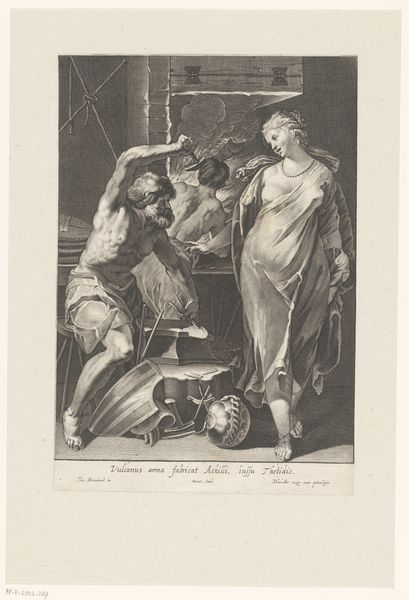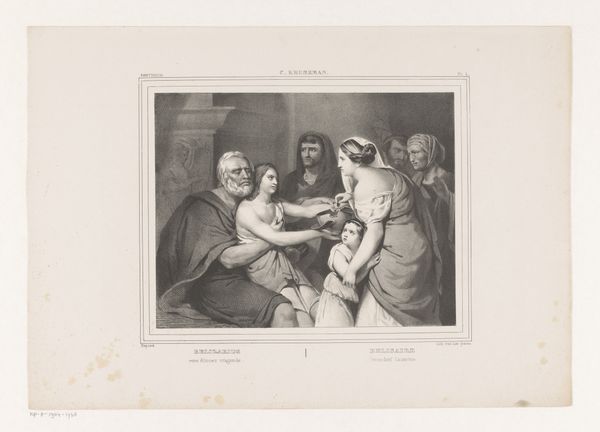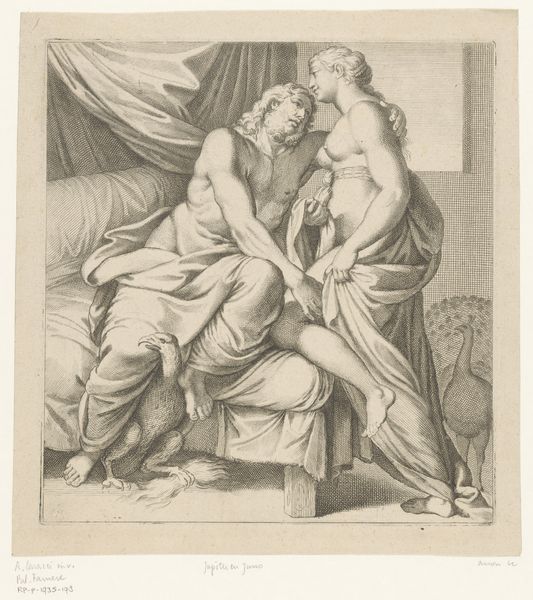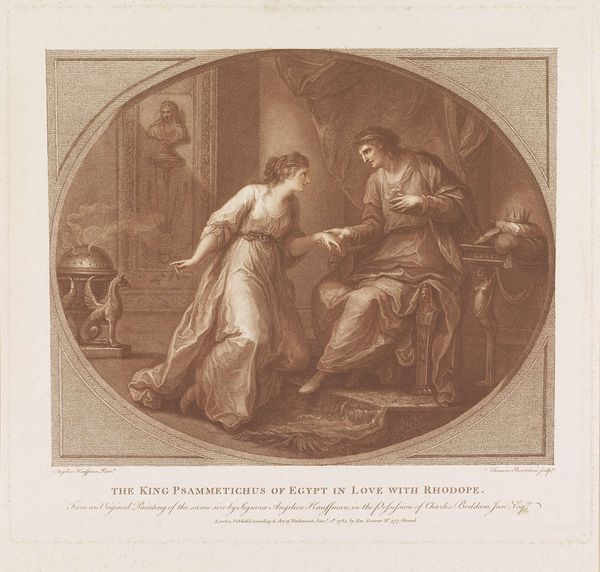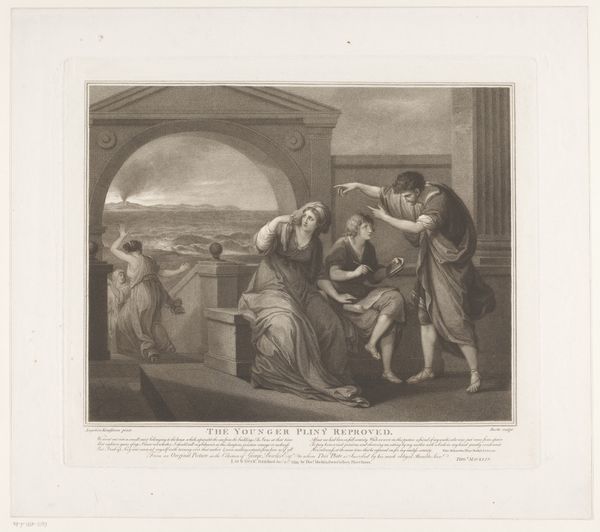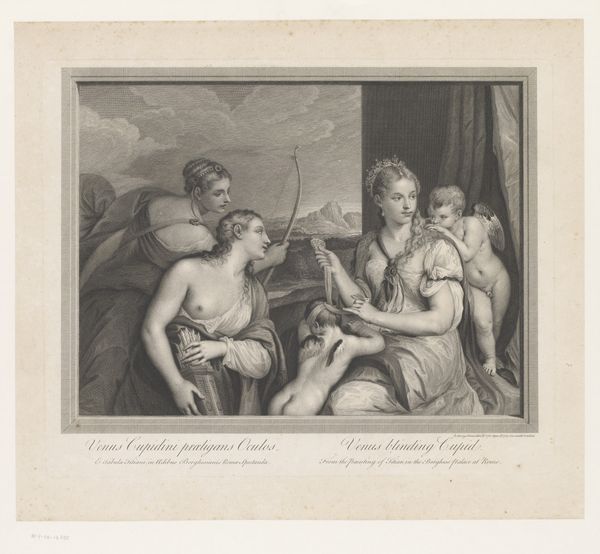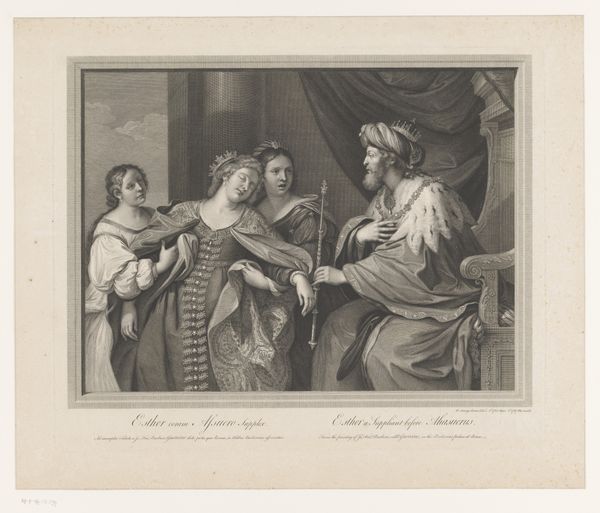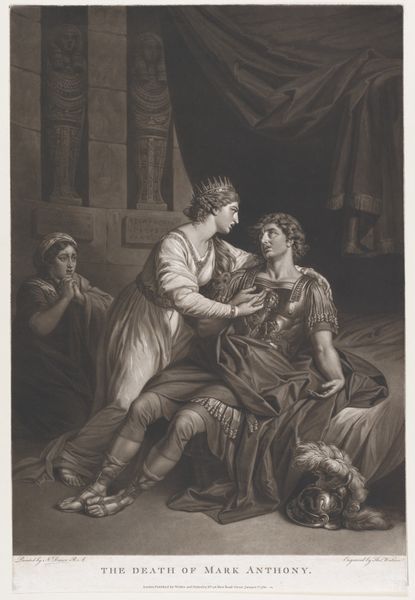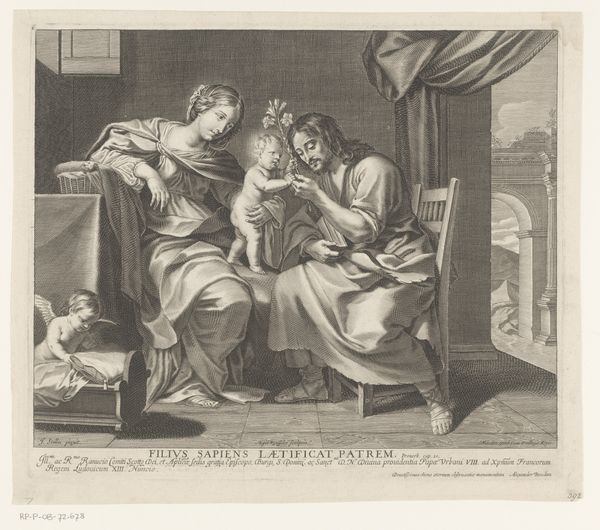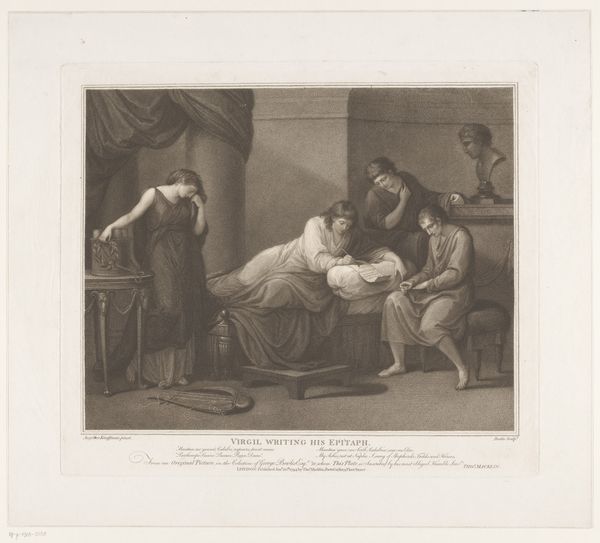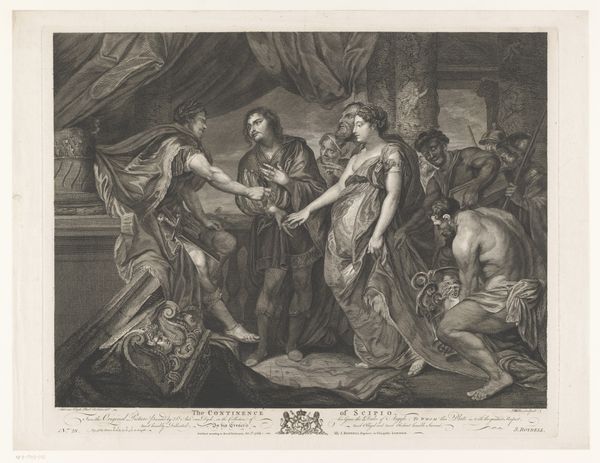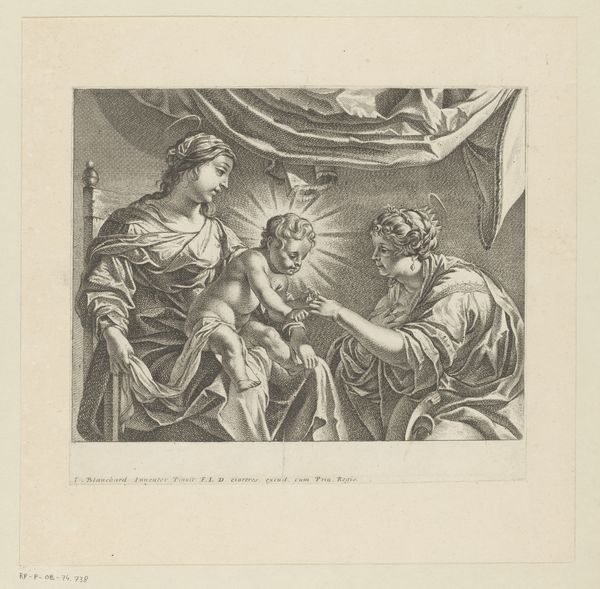
#
picture layout
#
wedding photograph
#
photo restoration
#
expressing emotion
#
retro 'vintage design
#
archive photography
#
historical photography
#
old-timey
#
yellow element
#
photo layout
Dimensions: height 397 mm, width 485 mm
Copyright: Rijks Museum: Open Domain
Editor: This engraving, "Joseph and Potiphar's Wife" by Robert Strange, dating from the 1760s, depicts a dramatic encounter. There’s a very clear power dynamic being presented, with Potiphar's wife aggressively grabbing Joseph's cloak. What kind of historical context is informing the depiction of gender and power here? Curator: The choice to depict this specific biblical scene speaks volumes about the socio-political anxieties present in 18th-century Europe. Consider the context of rapidly changing social norms. Representations of female desire, especially when considered transgressive, become a battleground for defining morality and maintaining social order. The power dynamic you see so vividly enacted in this engraving would resonate with contemporary debates about gender roles and the perceived threat to traditional patriarchal structures. Editor: So, the art becomes a way of working through those anxieties publicly? Curator: Precisely. And beyond that, how is Robert Strange implicated? He positions himself as a moral gatekeeper by reproducing this particular scene. The question becomes: is Strange simply reflecting existing norms, or is his artistic interpretation subtly reinforcing, or perhaps even challenging, the status quo? What do you notice about his technique that informs this interpretation? Editor: I guess that the clear lines of the engraving emphasize a sense of control and order, maybe to temper the potentially scandalous narrative? And the very fact it's rendered as a print – intended for wider distribution - indicates an intention to broadcast this message broadly? Curator: Exactly! The print medium is key. Think about the public accessibility of engravings at the time. It wasn't just about individual artistic expression. It was about disseminating specific ideologies and moral codes to a wider audience, solidifying these values within society. This print becomes an instrument of cultural formation. Editor: That gives me a completely different way to appreciate not just the artwork but its function within a society. Thank you! Curator: My pleasure. I think recognizing that art acts as both a mirror and a molder of its society really transforms our understanding of it.
Comments
No comments
Be the first to comment and join the conversation on the ultimate creative platform.
